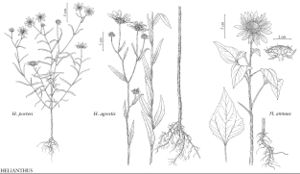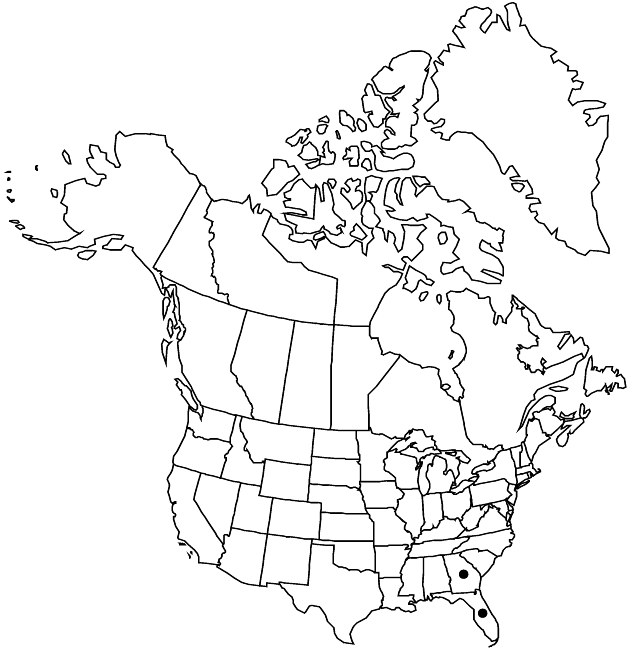Helianthus agrestis
Proc. Biol. Soc. Wash. 13: 184. 1900.
Annuals, 100(–200+) cm. Stems erect, glabrous or glabrate (glaucous). Leaves mostly cauline; mostly opposite; petioles 0.5–1.2 cm; blades (often 3-nerved distal to bases) lanceolate, 6–11 × 0.7–1.9 cm, bases cuneate, margins ± serrate, faces scabrous, not gland-dotted. Heads 1–15. Peduncles 2–8 cm. Involucres hemispheric, 10–15 mm diam. Phyllaries 15–25, lanceolate, 8–9 × 1.5–2 mm, (margins ciliate) apices acuminate, abaxial faces glabrate. Paleae 5–7, subentire to ± 3-toothed (apices purplish, glabrous). Ray florets ca. 12; laminae 12–25 mm. Disc florets 50+; corollas 3.5–4 mm, lobes reddish purple; anthers dark, appendages dark. Cypselae 2.5–3.2 mm, glabrous (± tuberculate); pappi of 2 aristate scales 1.5–2 mm. 2n = 34.
Phenology: Flowering late summer to fall.
Habitat: Mucky wet soils, marshes, pine flatwoods
Elevation: 0–50+ m
Discussion
Distinctive among species of Helianthus with an annual habit in having a combination of reddish disc corolla lobes and yellow style branches, H. agrestis is also characterized by its glabrate stems and phyllaries and by relatively long hairs on the petioles and basal margins of the leaves.
Selected References
None.

